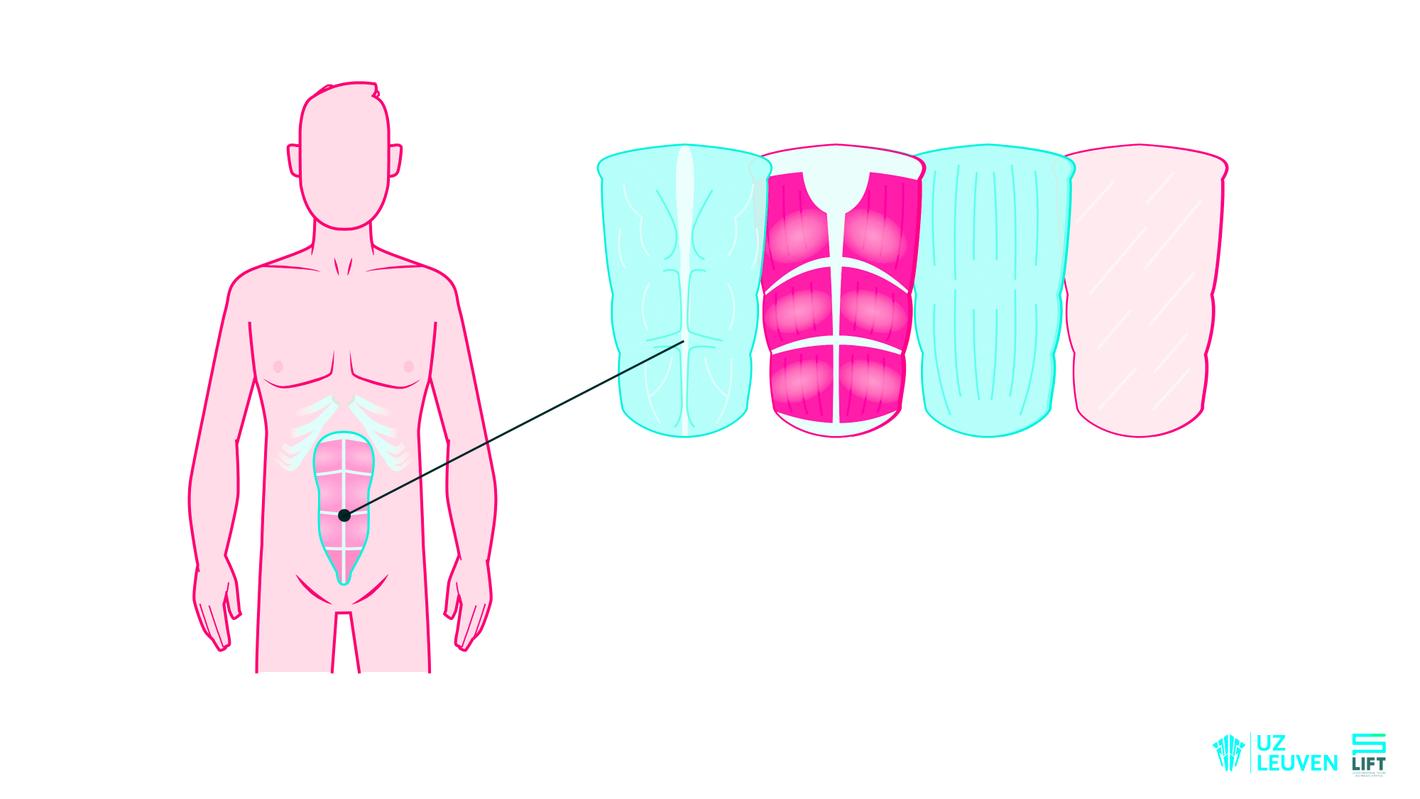The technique for an abdominal wall transplant, during which the peritoneum and tendon from the six-pack of a deceased donor are being transplanted, helps prevent an open abdomen after organ transplant.
An abdominal wall transplant is not performed for aesthetic reasons: it is a necessary, though extremely delicate, procedure for patients in need of an intestinal or multivisceral transplant. In other words: simultaneously a new stomach, liver, pancreas and small intestine. On average, UZ Leuven only sees these types of procedures once or twice a year.
From week one after transplantation, we could see small blood vessels forming again in the transplanted abdominal wall. prof. dr. Laurens Ceulemans
prof. dr. Laurens Ceulemans
A recurring challenge is that the abdominal wall can no longer be closed in the wake of an intestinal transplant: some of the failing organs have already been surgically removed earlier, making the abdominal wall very rigid and causing the abdominal cavity to shrink. For decades, to be able to close the abdomen after a transplant, various different techniques were being tested, but transplant surgeons had not been able to find the golden egg.
Six-pack without muscles
Based on a technique developed in the USA and so far only applied in about 50 procedures across the world, prof. dr. Laurens Ceulemans and the UZ Leuven intestinal transplant team managed to perform two successful abdominal wall transplants in patients undergoing a multivisceral transplant in September 2020 and November 2021.
Prof. dr. Laurens Ceulemans: “The technique involves transplanting the tendons and the peritoneum from the six-pack of a deceased donor, without repairing the muscles and the blood vessels. You can best compare this with the transplant of an aortic valve or a tendon in the leg.”
With a micro-CT and a tissue analysis, professor Ceulemans' team showed that, after attaching the tendons, circulation in the transplanted abdominal wall starts again. “From week one after transplantation, we could see small blood vessels forming again in the transplanted abdominal wall. After six months, these formed an entire network without any signs of rejection”, according to prof. dr. Ceulemans.
Patients with severe abdominal wall defects
UZ Leuven and KU Leuven researchers are currently examining whether abdominal wall transplants can be safely performed without the use of immunosuppresive drugs and how long a donor abdominal wall can be kept safely in the tissue bank. Dr. Nele Van De Winkel (abdominal wall surgeon): ”In time, the new transplant technique can potentially prove useful for patients with severe abdominal wall defects and intestinal fistulae, as is the case in patients with Crohn's disease.”

Intestinal transplants at UZ Leuven
UZ Leuven is the first Belgian hospital to successfully perform abdominal wall transplants. This realisation is the result of a targeted specialisation. On 20 January 2017, exactly 5 years ago, the Leuven Intestinal Failure and Transplantation Centre (LIFT) was established, a unique multidisciplinary assessment centre for patients with intestinal failure, led by prof. dr. Jacques Pirenne (transplant surgeon) and prof. dr. Tim Vanuytsel (gastroenterologist). Until now, UZ Leuven performed 26 intestinal transplants. The centre stimulates Leuven gastroentrologists, abdominal surgeons and intestinal transplant surgeons to do research into ground-breaking treatment methods.